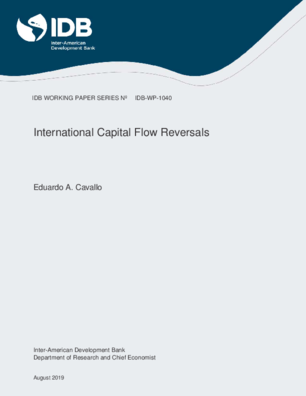International Capital Flow Reversals
Date
Aug 2019
Sudden stops in capital flows are a form of financial whiplash that creates instability and crises in the affected economies. Sudden stops in net capital flows trigger current account reversals as countries that were borrowing on net from the rest of the world before the stop can no longer finance current account deficits. Sudden stops in gross capital flows are associated to financial instability especially when the gross flows are dominated by volatile cross-border banking flows. Sudden stops in gross and net capital flows are episodes with an external trigger. This implies that the spark that ignites sudden stops originates outside the affected country, more specifically, in the supply of foreign financing that can halt for reasons that may be unrelated to the affected country’s domestic conditions. Yet a spark cannot generate a fire unless combustible materials are around. The literature has established that a set of domestic macroeconomic fundamentals are the combustible materials that make some countries more vulnerable than others. Higher fiscal deficits, larger current account deficits, and higher levels of foreign currency debts in the domestic financial system are manifestations of weak fundamentals that increase vulnerability. Those same factors increase the costs in terms of output losses when the crisis materializes. On the flip side, international reserves provide buffers that can help countries offset the risks. Holding foreign currency reserves hedges the fiscal position of the government providing it with more resources to respond to the crisis. While it may be impossible for countries to completely insulate themselves from the volatility of capital inflows, the choice of antidotes to prevent that volatility from forcing potentially costly external adjustments is in their own hands. The global financial architecture can be improved to support those efforts if countries could agree on and fund a more powerful international lender of last resort that resembles at the global scale the role of the Federal Reserve Bank in promoting financial stability in the United States.



